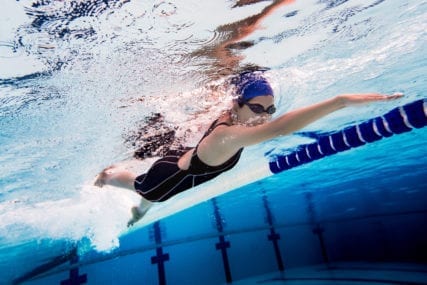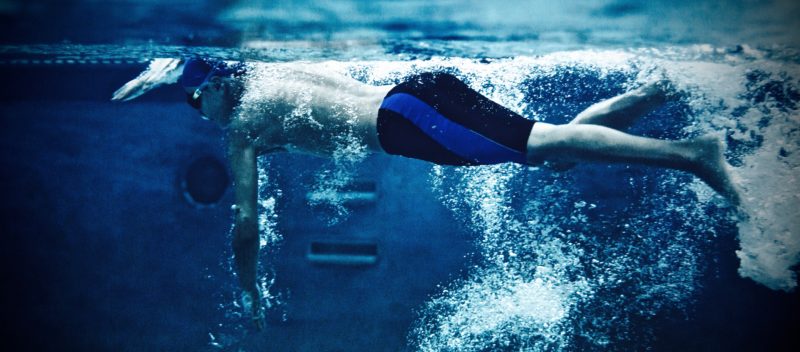If you are the parent of a swimmer who is complaining of pain it’s important to take your young athlete’s concerns seriously. Most swimmers don’t have lasting pain, which means if your child does, it’s probably being caused by something other than simply muscle soreness or too much swimming. If a few days of rest doesn’t fix the issue and the pain persists for a week or longer it’s time to see a medical professional.
Here are the three types of pain swimmers are most likely to experience:
Shoulder Pain

Whenever I see a swimmer with pain I start my exam by looking at the shoulder. This part of the body is the engine of a swimmer, it’s what drives the body through the water. It’s also the root of most swimming injuries.
The added resistance of water causes the shoulder to work harder than it does when it goes through air. That extra stress can lead to shoulder tendinitis or an injury to the rotator cuff.
Here are the three main factors that can cause shoulder pain for swimmers:
- Fatigue: If your child is going from a recreational swim team to a competitive swim team the increase in pool time can lead to deteriorated form due to fatigue which leads to injury. This is something easy to fix because it simply requires the swimmer to reduce training time and gradually return to full as they build more stamina and can practice longer while still using proper technique.
- Poor biomechanics: When we talk about biomechanics we’re not talking about how a child is built, but rather how they move in space. Patients I treat for swimming injuries often have an issue with their posture or flexibility. A good swimmer utilizes their shoulder blade to get the whole body moving through the water. Poor posture can take the shoulder blade out of the equation which puts more stress on the arms which can lead to injury. Flexibility is also important because swimmers need to have enough range of motion in their body to perform each stroke correctly.
- Poor form: Some kids have everything they need physically to be a strong swimmer, but their lack of proper form puts them at risk of injury. This can be corrected by working with your swimming coach to make sure your child is doing everything fundamentally correct in the pool.
Back Pain
It’s not as common as shoulder pain, but swimmers sometimes experience back pain because of either a weak core or lack of shoulder flexibility.
As the shoulders and legs push against the water you get what is like a sheer force against the back. That force puts stress on the back that can lead to injury if your child’s core is not strong enough.
Issues with flexibility or range of motion in the shoulder can also lead to back pain because swimmers will compensate for those deficiencies by moving their back more than they need to especially seen in butterfly, causing added stress and pain.
All of this means your child may experience back pain due to an issue with his or her shoulder, without actually feeling pain in the shoulder.
Knee and Ankle Pain

If a swimmer comes to the doctor with knee pain it’s usually because of how they perform the breaststroke. This stroke uses a kick that puts an odd torque on the knee and can cause pain.
Pain in the knee frequently means the swimmer’s hip rotators are not strong enough to withstand the force of the water. Sometimes by the time a swimmer sees a doctor they may be experiencing knee pain during all of their strokes, but it likely started with the butterfly.
Regardless of the type of pain or injury your young swimmer is experiencing, it is important to have it checked out sooner than later. Many of these injuries can build on each other, so taking care of a small problem earlier will help your child get back to the pool more quickly.
To learn more about our Division of Sports Medicine, please call 513-803-4878 or fill out our online form for more information.


Thank you for this article! I wish more coaches at all levels had access to this information. My daughter is a swimmer who has been greatly helped by being evaluated and treated by Lizzy Long in the Liberty Campus PT. Her understanding of swimmimg and mechanics is outstanding!